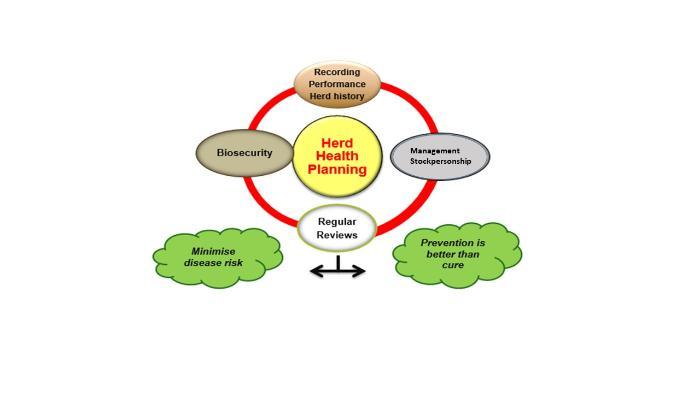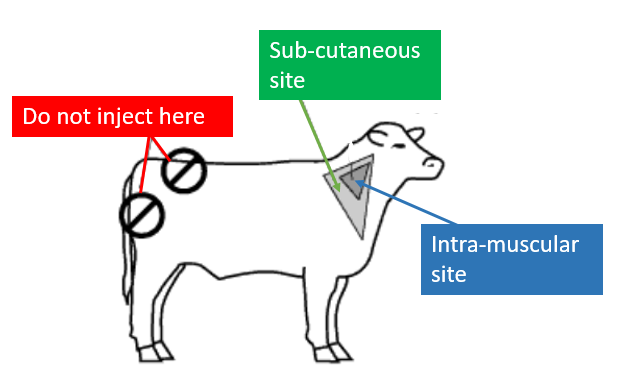Disease Prevention
“Prevention is better than cure.”
The first step farmers can take to prevent the development of AMR is to enhance the overall health status of animals on the farm. This approach not only reduces the need for antibiotics but also optimizes farm productivity. Acquiring this important goal requires the implementation of comprehensive disease prevention strategies, including strict farm biosecurity measures, effective farm husbandry practices and targeted animal vaccination programmes. Antibiotics should never be used as a substitute for poor husbandry management practices, as this would undermine efforts to prevent AMR and compromise animal health.
Disease Prevention Strategies
There is a collective responsibility on farmers, as key stakeholders in the agri-food sector, to use antibiotics only when absolutely necessary, so as to preserve their efficacy for disease treatment in both humans, animals, and for society as a whole.
Healthy animals don’t need treatment with expensive antibiotics, so an increased focus on disease prevention measures is a key action to reduce use of antibiotics and thus reduce the risk of AMR development. The first step in addressing the challenge of AMR in farming is to enhance the overall health status of the animal population. Minimising disease prevalence on the farm reduces reliance on antibiotics, prevents the build-up of AMR, and improves overall animal productivity.
This can be achieved through implementation of the following disease prevention strategies:

Biosecurity
Effective farm biosecurity management is essential for safeguarding animal health on the farm. The term biosecurity refers to practices that are designed to help prevent the introduction and spread of disease within a farm. Simple and practical biosecurity measures tailored to each farm, will significantly reduce the risk of disease spread.
A number of disease threats originate from outside the farm which can be classified into direct and indirect modes of transmission. Disease can be spread directly through the introduction of animals, such as those bought onto the farm or from neighbouring animals. Indirect transmission can occur through farm visitors, slurry, animal equipment, wildlife and vermin, biological materials and the farm environment.
A number of disease threats also exist within the farm which may either be recently introduced or endemic to the herd. An endemic disease is always present within the herd but will only become apparent at certain times or under certain conditions, for example during production stress or herd expansion. Examples of endemic disease include Infectious Bovine Rhinotracheitis (IBR) and Salmonella. Management practices that prevent the spread of infection on the farm should be used to deal with on-going disease outbreaks, and these measures but should also be a part of standard farm practices to prevent the risk of future outbreaks.

More information on how to prevent disease entry onto farm



